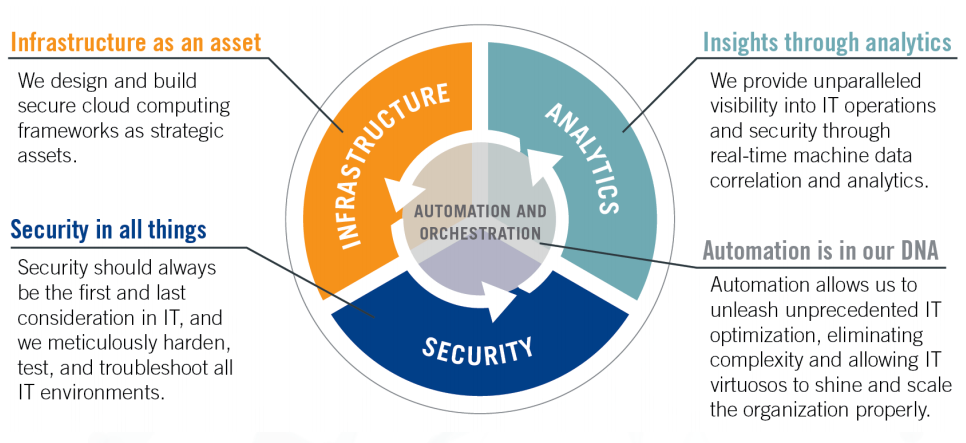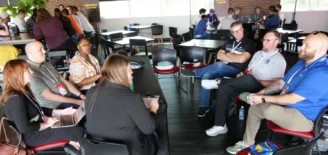Kinney Group is at the forefront of today’s ‘Gold Rush’
Ah, the cloud. It’s talked about in simplistic terms that make it seem like such an easy decision for organizations to make the migration themselves. However, in reality the migration is actually more of a true business transformation. Extraordinary growth in cloud services have compounded the complexity and confusion of software stacks and the associated underlying hardware for non-technical business and government leaders.
Organizations not born in the cloud often face severe headwinds from entrenched
executives, IT staff, and contractors. They fear data breaches (as they should), and overworked employees, steep costs, and excessive inefficiencies due to silos are all common points of friction. This fear is also debilitating, and frozen decision-makers are overwhelmed in finding a place to start.
“Most organizations can’t make the shift to the cloud by themselves,” explained Jim Kinney, founder and CEO of Kinney Group, an Indianapolis-based cloud solutions integrator. “And if they aren’t applying analytics and leveraging automation to radically simplify things from an operational and security perspective, then they’re going to be left behind.”
The New IT: Today’s Gold Rush

Jim KinneyCEO and Founder
The bottom line is this: the traditional IT ecosystem and its systems integrators are simply not equipped to deal with the new IT they way we are.”
Kinney Group, which celebrates its 10th anniversary of doing business this year, integrates the most advanced security, analytics, and infrastructure technologies for federal agencies and Fortune 1000 companies. “Automation is in our DNA” is one of the company’s key messaging points as they help companies access and use machine data to improve business processes.
Splunk, one of the leading and fastest growing machine data platforms, named Kinney Group its Public Sector Professional Services Partner of the Year in March. CRN magazine, the industry standard for recognition of the most successful solution providers, named Kinney Group to its 2016 Solution Provider 500 list for the first time as a newcomer last month.
Jim Kinney himself compares today’s shift to the cloud with the Gold Rush of 1849.
“If you go back in history and look at what happened during the Gold Rush, it was the people selling picks and shovels and services to the gold miners who made the real money,” Kinney said. “And so it is today. If you look around the tech sector, there are a lot of people panning for gold. Our goal is to be the best purveyor of picks and shovels and associated services for those companies.”
The Anti-Contractor Contractor
One key difference that sets Kinney Group apart from most other systems integrators is the company’s “teach customers to fish” approach and empower organizations to harness their investments. Unfortunately, this is an approach that would force most competitors to cannibalize their own businesses.
The traditional IT ecosystem is full of big systems integrators whose entire business model is built around providing personnel to handle brute force activities that Kinney Group handles through automation — often without any personnel necessary.
“One of the key tenants of the new IT is automation, and for those big systems integrators who solve problems with staff augmentation programs — which is to say, throwing resources and headcount at the problem — automation is an existential threat to their business model,” Kinney said. “We made this pivot long ago and invested in the human talent to use the power of the cloud combined with robust security, analytics and automation.”
In the federal realm, Kinney Group’s strategy is to build a reputation as the anti-contractor contractor. “We are showing federal agencies, quite frankly, how to get untethered from contractor support and to be able to use their own personnel through the robust application of analytics and automation,” Kinney said.
A Multi-Pronged Strategy
Kinney Group approaches the new IT with a multi-pronged strategy that is attentive to infrastructure, security, and analytics as the three cornerstones wrapped together with automation and orchestration.

Founded in 2006, Kinney Group’s early successes came through work in the federal space, which is still a large portion of the company’s business as they help U.S agencies make the shift to the cloud and become more software defined. New growth, however, is coming more and more from commercial businesses including about 50 new private sector customers signed since January this year.
The company posted double-digit growth each of the last three years and in November publicly announced plans to invest $5.8 million to renovate 10,000 square feet at its Indianapolis headquarters, adding up to 89 new high-wage jobs by 2019.
Kinney Group currently employs 78 people and all of the company’s growth to date has been accomplished without a single dollar of outside investment. That may change in the future as the company considers options other than growing organically.
Kinney Group is hiring to keep up with its rapid customer acquisition, and in particular, they are hiring sales professionals. Also, three different vice president roles are open in sales, programs and engineering, along with a variety of other positions. Jim Kinney stressed his company’s culture as a big draw for new employees, highlighting his colleagues’ genuine, unmasked passion for what they are doing and what Kinney Group stands for.
“We want to be known for improving people’s lives using the power of IT in the cloud to help organizations realize their potential,” Kinney said. “We focus on humans in a market that tends to be blind to everything but binary 1’s and 0’s.”

In an effort to raise the visibility and accelerate the growth of Indiana tech companies, each week we will spotlight a growing company with a compelling story. In particular, we will spotlight scale-up companies that are rapidly emerging and could become our community’s future success stories. Visit this page to learn more the Tailwind program and see if your company qualifies.
The Tailwind program is supported by grants from the Indiana Office of Small Business and Entrepreneurship (OSBE) and the JPMorgan Chase Foundation.


